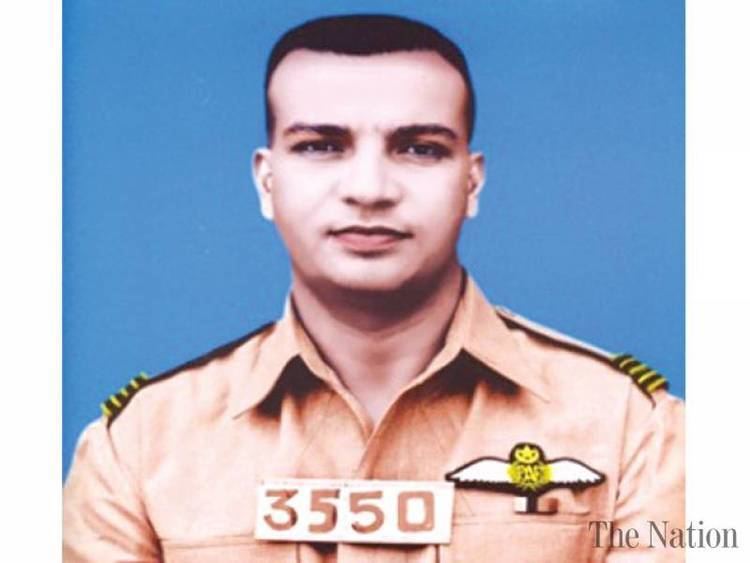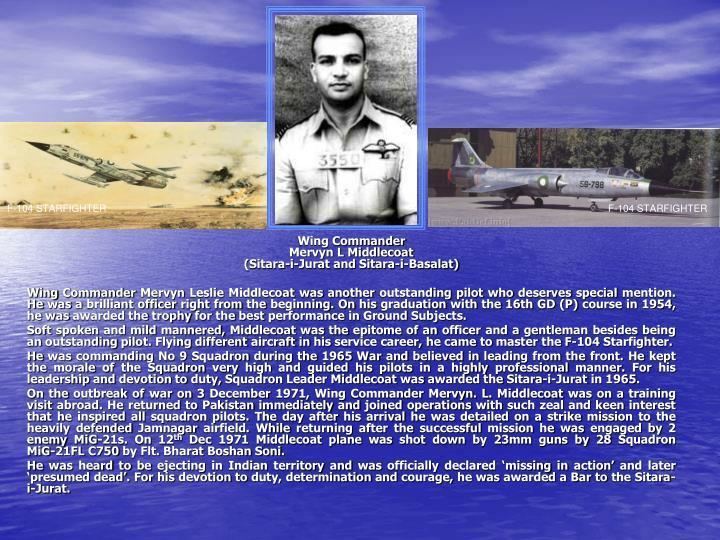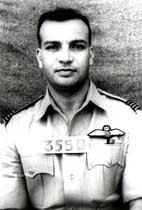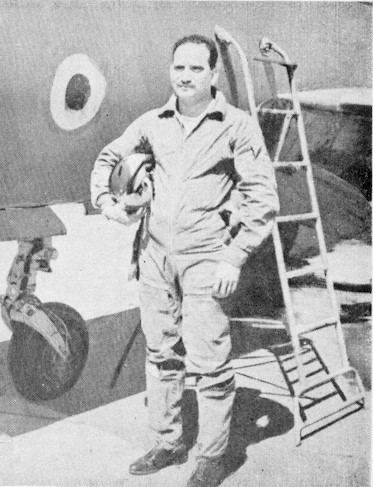Nickname(s) Commander Leslie Name Mervyn Middlecoat Buried at Remains not found | Years of service 1964–1971 | |
 | ||
Birth name Mervyn Leslie Middlecoat Rank Wing Commander (Lieutenant Colonel) Battles and wars Indo-Pakistani War of 1965, Indo-Pakistani War of 1971, Indo-Pakistani Air War of 1965, War of Attrition | ||
Education St. Anthony's High School | ||
Wing Commander Mervyn Leslie Middlecoat (July 1940 – 12 December 1971) was an Pakistani fighter pilot in the Pakistan Air Force (PAF) who was involved in a number of aerial battles during the 1965 and 1971 Indo-Pakistani wars, before being shot down on 12 December 1971. He was one of a number of distinguished Pakistani strike and fighter pilots of the period. Before his death he was stationed at Mauripur, Karachi, Pakistan where he flew the F-104 Starfighter.
Contents

Early life

Middlecoat was born into an Anglo-Indian family in Ludhiana, India, in July 1940. His parents were Percy and Daisy Middlecoat. He received his early education at Lawrence College Murree,St. Anthony's High School (Lahore) and Burn Hall College Abbotabad. Middlecoat joined the PAF, passed out of the 16th General Duty Pilot (GDP) Course in 1954, and won the Best Performance Trophy in ground subjects.

Soft-spoken and mild mannered, Middlecoat was considered to be the epitome of an officer and a gentleman, besides also being an outstanding pilot. Although he flew a number of different aircraft during his service career, he mastered both the F-86 Sabre and the F-104 Starfighter.
On 27 September 1957, he married Jeanne Viegas, the daughter of a Christian family living in Lahore. On 21 October 1959, a daughter named Leslie Ann was born to the Middlecoats while he was stationed at Mauripur, Karachi.
The 1965 War
Middlecoat's prowess as a pilot and leader were recognized early in his career and when Pakistan became the beneficiary of US military aid in the 1950s, he was selected, along with his close friend, Allauadin "Butch" Ahmed, to be the first two PAF officers to go to the US to train on the F-86 Sabre. This was a huge honor for a Christian officer. Some years later, the same two officers were again selected as PAF pioneers to go to the US to train on the more advanced F-104 Starfighter. The F-104 was inducted in the PAF's No. 9 Squadron (known as Griffins, which is the first fighter squadron of the PAF) and went on to be the "bogeyman" aircraft of Indian Air Force piots during the September 1965 war. (In fact, one terrified IAF pilot landed his Gnat in surrender at a forward PAF base after being pounced on by a F-104.)
As a Squadron Leader, Middlecoat commanded No. 9 Squadron during the 1965 war. Leading from the front, he kept the spirits of his boys high and guided his pilots in a highly professional manner. Besides undertaking dangerous photo-reconnaissance missions over Indian territory, including a key radar facility located in the grounds of a Sikh temple in Amritsar, Indian Punjab, he either shot down or badly damaged a high-flying IAF Canberra bomber egressing Pakistan airspace into India at night.
During the three-week war, Middlecoat flew 17 air defence sorties and three photo reconnaissance missions over forward Indian airbases. For his leadership and devotion to duty, he was awarded the Sitara-i-Jurat, the third highest award in the Pakistani military, in 1965.
The 1971 War
Promoted to Wing Commander, at the outbreak of war on 3 December 1971 Middlecoat was on a training assignment with the Royal Jordanian Air Force. The day after he returned to Karachi, he volunteered for a mission to attack the heavily defended Indian airbase at Jamnagar on 12 December.
After strafing aircraft parked on the runway, Middlecoat and his wingman were forced to abort their mission when they were bounced by two IAF MIG-21 aircraft from No. 47 Squadron IAF. Middlecoat, as leader of the sortie, was entitled to egress first but instead told his younger wingman to depart ahead of him. Maintaining a high speed, he reduced altitude and managed to deflect the first missile fired at his Starfighter. However, with the lead MiG21 closing range, he was shot down over the Rann (Gulf) of Kutch. The Indian pilot who shot him down, Flight Lieutenant Bharat Bhushan Soni, saw Middlecoat eject and his parachute deploy. As he fell into the Arabian Sea, Soni contacted a nearby IAF base to send a rescue team; however, by the time potential rescuers arrived, Middlecoat was nowhere to be found. He had landed in shark infested waters and it was considered unlikely that he survived. Declared missing in action, he was posthumously awarded a Bar to the Sitara-i-Jurat. His remains were never found. Such was Middlecoat's renown as a fighter pilot, leader and teacher that King Hussein of Jordan, a keen pilot, wrote to Middlecoat's widow, Jeanne, stating that his death was a personal loss. The King requested that Middlecoat be buried with the Jordanian flag under his head if he was to be wrapped in the Pakistani flag. Middlecoat had fought for the King earlier during the Six Day War with Israel in June 1967.
His citation read:
On the outbreak of war on 3rd December 71, Wing Commander Mervyn L Middlecoat was on a training visit abroad. He returned to Pakistan immediately and joined operations with such keen interest that he inspired all squadron pilots. The day after his arrival he was detailed on a strike mission to the heavily defended Jamnagar airfield. While returning after the successful mission he was engaged by two enemy Mig-21s. In the encounter his aircraft was hit by an enemy missile. He was heard to be ejecting in Indian territory and was officially declared missing in action. For his devotion to duty, determination and courage he was awarded a Bar to the Sitara-i-Jurat and Sitara-i-Basalat. (See PAF History 1989)
